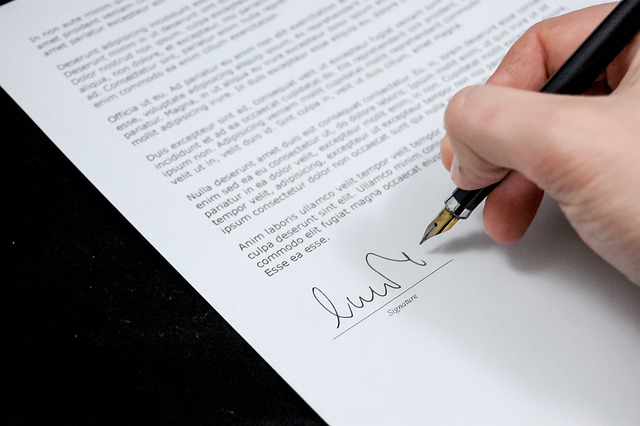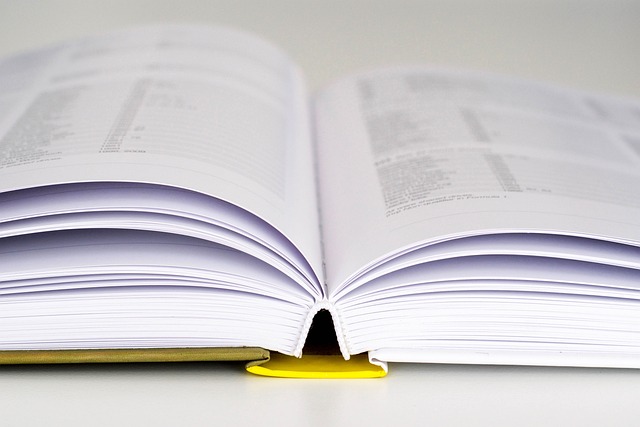UK Intellectual Property Documents translation services play a pivotal role in accurately translating patents, trademarks, and copyrights across languages and cultures. These specialized services ensure the precise conveyance of technical details and legal specifics within intellectual property documents, utilizing expert linguists with professional qualifications and knowledge of IP terminology. They employ advanced technologies such as machine learning algorithms to interpret complex legal language, while cloud-based collaboration tools enable efficient, real-time teamwork across different time zones. This ensures that international IP offices receive translations that uphold the original documents' integrity and comply with their stringent standards, facilitating effective global management of intellectual property rights for innovators and creators. Real-life applications of these services have helped UK inventors protect their innovations in markets like China and enabled fashion brands to maintain consistent brand identity across Europe by localizing trademarks into Spanish and German.
Navigating the complexities of international commerce hinges on precise communication, particularly in the realm of intellectual property (IP). This article delves into the critical role of certified translations for patents, trademarks, and copyrights within the UK context. We will explore the nuances of translation services for UK Intellectual Property Documents, emphasizing the importance of accuracy and compliance to safeguard your IP rights globally. From understanding the distinctions between different IP categories to adhering to legal requirements, this guide will equip you with the knowledge to make informed decisions. Additionally, we’ll examine best practices for selecting translation services and the impact of technological advancements on the translation process. Join us as we unravel the intricacies of effectively translating your IP documents for international protection and success.
- Understanding the Importance of Accurate Translations for UK Intellectual Property Documents
- Overview of Patent, Trademark, and Copyright Translation Needs
- The Role of Certified Translations in International IP Protection
- Key Differences Between Patents, Trademarks, and Copyrights in the Context of Translation
- Navigating Legal Requirements for UK Intellectual Property Document Translation
- Best Practices for Choosing a Translation Service for IP Documents
- The Translation Process: Ensuring Precision and Compliance for UK IPO Materials
- Case Studies: Successful Translations of Patents, Trademarks, and Copyrights in Global Markets
- Utilizing Technology to Streamline the Translation of Intellectual Property Documents
Understanding the Importance of Accurate Translations for UK Intellectual Property Documents

When engaging with international markets, the precise translation of UK intellectual property documents is paramount. These documents, encompassing patents, trademarks, and copyrights, are the bedrock of legal protection for inventions, brands, and original works. The nuances inherent in these documents require a deep understanding of both the source and target languages as well as the specialized vocabulary unique to intellectual property law. Translation services specializing in UK intellectual property documents offer accuracy and cultural relevance, ensuring that the meaning and legal implications are preserved across borders. This is crucial for maintaining the integrity and enforceability of intellectual property rights within multinational contexts.
In the dynamic global economy, the stakes for accurate translations of UK intellectual property documents are high. A single mistranslation can lead to misinterpretation or loss of legal rights. It’s not merely a matter of conveying information but also safeguarding the competitive edge and innovation that these documents protect. Trusted translation services are equipped with expert linguists who are often subject-matter specialists, providing certifications and quality assurance for translations. This commitment to excellence is essential for businesses and inventors to navigate international waters confidently, leveraging their intellectual property effectively and ensuring compliance with foreign regulations.
Overview of Patent, Trademark, and Copyright Translation Needs

When businesses seek to protect their intellectual property on an international scale, translating patents, trademarks, and copyrights into various languages becomes a critical step. The intricacies of UK Intellectual Property Documents translation services are paramount for ensuring that these vital legal instruments are understood and recognized in different jurisdictions. Patents safeguard inventions and innovations, granting inventors exclusive rights to exploit their discoveries for a limited period. As businesses expand globally, the necessity to translate patents arises to secure legal protection and maintain a competitive edge. Trademarks are unique marks or symbols used to distinguish goods and services provided by different entities. Their translation is essential to establish brand identity in foreign markets and prevent potential infringement issues. Similarly, copyrights protect original works such as literature, music, and art from unauthorized use and translation of these documents allows creators to assert their rights across the globe.
The role of UK Intellectual Property Documents translation services is not merely to convey text but to ensure that the legal nuances within patents, trademarks, and copyrights are accurately represented in the target language. This involves a deep understanding of both the source and target languages as well as the legal framework governing intellectual property rights. Translation errors can lead to misinterpretations or even the invalidation of these rights, underscoring the importance of employing specialized translators who are adept at navigating the complexities of international intellectual property law. These professionals not only translate but also localize documents, making them compliant with the legal requirements and conventions of the intended country, thereby facilitating seamless recognition and enforcement of UK Intellectual Property rights worldwide.
The Role of Certified Translations in International IP Protection

When businesses venture into international markets, the protection and enforcement of intellectual property rights become paramount. Certified translations play a critical role in this process, particularly for UK Intellectual Property Documents translation services. Patents, trademarks, and copyrights are the cornerstones of intellectual property (IP) and require precise, accurate translations to be recognized and enforceable globally. These certified translations ensure that the language barriers do not hinder the legal effectiveness of these documents. They must adhere to the stringent standards set by authorities such as the UK Intellectual Property Office and international bodies like the World Intellectual Property Organization (WIPO). The accuracy of these translations is non-negotiable; a minor mistranslation could lead to misinterpretation, loss of rights, or even invalidation of the IP assets.
Engaging specialized UK Intellectual Property Documents translation services is essential for businesses seeking to safeguard their inventions, brands, and original works in foreign jurisdictions. These translations are not merely linguistic conversions but are legally verified documents that confirm the authenticity and reliability of the translated content. The certification process involves a certified translator who is often a member of a relevant professional translation body, ensuring the translation’s integrity and compliance with international IP standards. This level of precision in translation facilitates smoother interactions with foreign patent offices, trademark registries, and copyright entities, thereby enhancing the effectiveness of UK businesses’ international IP strategies.
Key Differences Between Patents, Trademarks, and Copyrights in the Context of Translation

When navigating the intricate world of intellectual property, it becomes imperative to understand the nuances between patents, trademarks, and copyrights, particularly in the context of translation. Patents protect inventions and novel technological concepts, ensuring that the details of an invention’s design and function are conveyed accurately across different languages and cultures. The translation of a patent application must be precise, as any discrepancy can affect the validity and scope of protection granted. UK Intellectual Property Documents translation services specialize in this domain, ensuring that the technical language and specifications are correctly interpreted to maintain the integrity of the invention’s novelty and originality.
Trademarks, on the other hand, safeguard distinctive signs, indicators, or designs used by entities to identify and distinguish their goods or services from those of others. The translation of trademarks requires a nuanced approach, as the visual elements and brand identity must remain consistent across borders. UK Intellectual Property Documents translation services address this by carefully localizing the marks, taking into account the cultural connotations and legal frameworks specific to each jurisdiction. Copyrights protect original works such as literature, music, art, and software, ensuring that the author’s expression is preserved in its entirety. Translating copyrighted material demands a delicate balance between fidelity to the original text and adaptation to the target audience, a task well-suited for the expert linguists and cultural advisors found within UK Intellectual Property Documents translation services. Each of these intellectual property entities plays a distinct role in commerce and culture; thus, their translations must be handled with specialized knowledge and care to uphold their legal and creative significance.
Navigating Legal Requirements for UK Intellectual Property Document Translation

When it comes to translating UK intellectual property documents, such as patents, trademarks, and copyrights, precision and compliance with legal requirements are paramount. UK Intellectual Property Documents translation services specialize in accurately conveying the content of these critical records from one language to another. These specialized services understand the complexities involved in patent translations, where technical accuracy and terminological precision are essential to maintain the integrity of the intellectual property’s protection across borders. Trained linguists with subject matter expertise in the field of intellectual property ensure that all nuances and legal specifics are accurately rendered in the target language. This is crucial for patents, trademarks, and copyrights as any discrepancies or mistranslations can lead to complications in the enforcement and recognition of these rights internationally.
Choosing a reputable UK Intellectual Property Documents translation service means opting for professionals who are well-versed in the specific terminology and legal framework governing intellectual property. These services often provide certified translations, which are necessary for submitting applications to international patent offices or when enforcing IP rights in foreign jurisdictions. The certified status of these translations attests to their accuracy and reliability, giving assurance that the translated documents will be accepted and honored by relevant authorities worldwide. This is an critical step for businesses and inventors looking to protect their innovations and creative works on a global scale.
Best Practices for Choosing a Translation Service for IP Documents

When engaging a translation service for the critical task of translating intellectual property documents such as patents, trademarks, and copyrights, it is imperative to select a provider with specialized expertise in UK intellectual property documents translation services. The accuracy and legal compliance of these translations are paramount, as they often determine the enforceability and protection of your intellectual assets internationally. Opt for translation services that offer native-speaking linguists with professional qualifications and proven experience in intellectual property law, ensuring the nuances of both the source and target languages are appropriately captured. Additionally, verify that the service has a comprehensive understanding of the specific terminologies used within the IP sector to avoid misinterpretations or errors that could compromise your legal position.
Furthermore, due diligence should extend to confirming the translation service’s adherence to industry standards and quality assurance protocols. This includes inquiries about their certification status, such as ISO certifications, which are indicative of a commitment to consistent and high-quality translations. It is also advisable to engage with a service that provides certified translations where necessary, as this can be a legal requirement for UK intellectual property documents translation services. By choosing a provider with a robust track record in handling similar translations, you can ensure that your IP documentation will be translated with precision and care, thereby safeguarding your intellectual property rights on an international scale.
The Translation Process: Ensuring Precision and Compliance for UK IPO Materials

When it comes to intellectual property (IP) documents such as patents, trademarks, and copyrights, accuracy is paramount. The translation process for UK Intellectual Property Office (UK IPO) materials demands a high level of precision due to the complex and technical nature of these texts. Certified translations are not merely a matter of converting text from one language to another; they involve a meticulous approach that ensures the integrity, clarity, and legal compliance of the content. Translators specializing in UK Intellectual Property Documents translation services must be adept at navigating the nuances of both the source and target languages, as well as the specific terminology used within the IP field. This includes understanding the context of the invention, the distinctiveness of trademarks, and the scope of copyrighted works to accurately convey their significance in the translated version. The translator’s role is to present the information in a manner that maintains the original document’s meaning, intent, and legal effectiveness, which often requires working closely with legal experts and patent attorneys. To ensure compliance with UK IPO standards, these translation services adhere to established protocols, including the use of certified translators who are native speakers or have equivalent language proficiency, and who possess a deep understanding of IP law and its application across different jurisdictions. This commitment to precision and compliance is crucial for the successful prosecution and maintenance of intellectual property rights in a globalized marketplace.
Case Studies: Successful Translations of Patents, Trademarks, and Copyrights in Global Markets

UK intellectual property documents require precise and accurate translations to maintain their legal integrity in global markets. A case study that exemplifies this is the successful translation of a British pharmaceutical company’s patent for a novel drug. The translation service provider, specializing in UK intellectual property documents, meticulously translated the complex terminology from English into Mandarin Chinese, ensuring that the technical specifications and legal clauses were conveyed accurately. This translation enabled the drug to secure patent protection in China, opening up new avenues for market entry and commercialization. Similarly, a renowned UK fashion brand leveraged expert translation services to localize its trademarks into Spanish and German, thereby safeguarding its brand identity across Europe and establishing a strong foothold in these markets. The translations were crucial for the brand to maintain consistency in its global branding efforts while adhering to local legal requirements. These cases underscore the importance of professional translation services in the successful internationalization of UK intellectual property documents, ensuring that innovators and creators can protect and expand their rights globally.
Utilizing Technology to Streamline the Translation of Intellectual Property Documents

In the realm of intellectual property (IP), precision and accuracy are paramount, especially when it comes to international protection and enforcement. UK Intellectual Property Documents translation services leverage cutting-edge technology to streamline the translation process of patents, trademarks, and copyrights. These advanced services employ sophisticated software that not only translates text but also interprets complex legal terminology specific to IP law, ensuring a high degree of fidelity in documentation. This is particularly crucial when UK inventors or brand owners seek to protect their innovations or brands abroad. The use of machine learning algorithms and natural language processing (NLP) enables these services to provide translations that are not only linguistically correct but also contextually appropriate for the intended audience. Furthermore, by integrating cloud-based platforms, these translation services offer real-time collaboration capabilities, allowing teams across different time zones to work concurrently on the same document, significantly reducing turnaround times and enhancing productivity. This technological approach ensures that the nuances of IP documentation are preserved, and that translations meet the rigorous standards required by international patent offices, trademark registries, and copyright agencies, thereby facilitating smoother and more efficient global IP management.
In concluding, the meticulous translation of UK Intellectual Property Documents is a critical component in the global dissemination and protection of innovations and creative works. Whether one is navigating the nuances of patents, the distinctiveness of trademarks, or the originality of copyrights, the need for precise and certified translations cannot be overstated. This article has elucidated the multifaceted nature of translation services in this domain, emphasizing the importance of legal compliance, linguistic accuracy, and specialized expertise. By adhering to best practices and leveraging advancements in technology, businesses and individuals can effectively bridge language barriers, ensuring their intellectual property rights are honored across international borders. It is clear that for those seeking to secure their IP rights outside the UK, a reliable UK Intellectual Property Documents translation service stands as an indispensable ally in safeguarding their inventions, brands, and creative content against misinterpretation and infringement.



